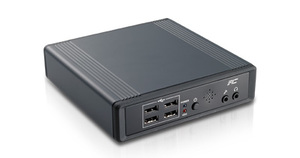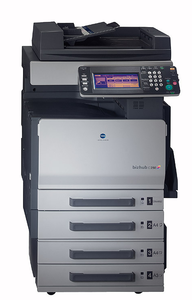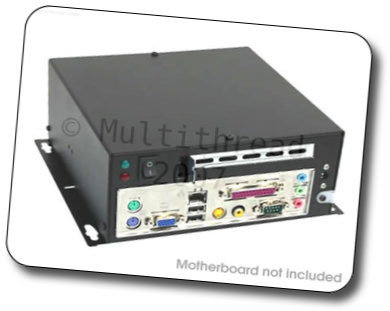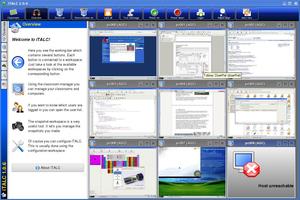Solved PXE Booting the Viglen MPC-L
28 Aug 2008
I have solved the issue with PXE booting on the Viglen MPC-L!
To get past the kernel panic, it was necessary to switch of acpi in the kernel. In LTSP that means copying the following file:

I have solved the issue with PXE booting on the Viglen MPC-L!
To get past the kernel panic, it was necessary to switch of acpi in the kernel. In LTSP that means copying the following file:

Persistence paid off, in that F1 will work, but it is a race between the detection of the USB keyboard and the completion of the boot loader. I found that if I moved the cursor on the grub screen it paused, enabling me to Ctrl-Alt-Del, which seemed to enable to USB detection to complete quicker. Or perhaps I was just lucky. But in fact it’s immaterial as the PXE boot settings are not there, but are instead under Shift-F10, which seems to work fine.

The Viglen MPC-L is a very small thin-client device, running Xubuntu with the XFCE desktop. At £99 including VAT, this is a very inexpensive PC. I recently listened to a review of the device on the Ubuntu UK Podcast. They described the device as slow, but explained that the Viglen MPC-L is really intended as a thin client device anyway. I decided to order a test unit for evaluation, in the hope that it would work as a thin client for our LTSP server.

A month ago I wrote about our problems printing to our colour photocopier. Well this problem is still hurting us. I have tried setting up cups to work by lpr, ipp, http, socket and jetdirect. Amazingly I was able to print CUPS test pages from most of these, but without it making any difference to the problem. I have tried switching off CUPS in Iceweasel, so that it prints via kprinter (see Configure Iceweasel to print via kprinter), but amazingly the problem continues.

It’s been bothering me for some time that I am using Kubuntu instead of Debian on my work desktop PC. Yesterday I had a drive failure necessitating a reinstall; what better excuse could there be? Having decided to change to Debian, I decided to install Sid, and then I decided that, as KDE 4.1 is now out, why not go the whole hog.
The experience was pretty positive, really the only problem was that I needed to tweak the xorg.conf in order to get my keyboard and mouse working, other than that it was a pretty straightforward install.

Some time ago I bought the following kit:
With the intention of attaching them to the underside of showroom desks as an LTSP Client. Unfortunately they don’t provide anywhere for an optical drive, which our MD felt was essential. So what to do with it? Well, I decided to try and set it up as a low-wattage PC for potential use in a car, caravan, boat, or simple a green PC for home use. To that end I purchased the following additional items:

Our ADSL connection went down yesterday morning, taking with it our websites, email and browsing. It is amazing how cut-off you feel without Internet access. We have a fully-managed service, so Clara.net sent out a replacement router, only to find that the problem was elsewhere and that they had to log the fault with BT.

Since making the transition to Linux we have been unable to print reliably to our Konica Minolta C250 colour photocopier. Basically only simple print jobs will print, more complicated print jobs never come through, the data light flashes indefinitely and the photocopier needs to be rebooted. In particular we have problems printing PDFs and wep-pages in Iceweasel. Web-pages in Konqueror seem okay, which makes you think that the problem is with the non-KDE applications, but the PDFs that won’t print from Acrobat Reader, also won’t print from KPDF.
Following the installation of Italc on our LTSP Server, users reported that they had several green icons in their system tray. This transpired to be the KDE session manager, which automatically restores all applications running at time of logging-off. I have updated my Install Italc instructions to include excluding ica from KDE session manager.

This turned out to be a complete nightmare, and took several days to resolve. I never did manage to get x11vnc working on the client, nor did I manage to get italc (which I think also uses x11vnc) working on the client. In the end I settled for installing italc-client on the server, so that the client runs when users log onto the server, allocating each user a unique port, and putting a little green italc icon in their system tray.